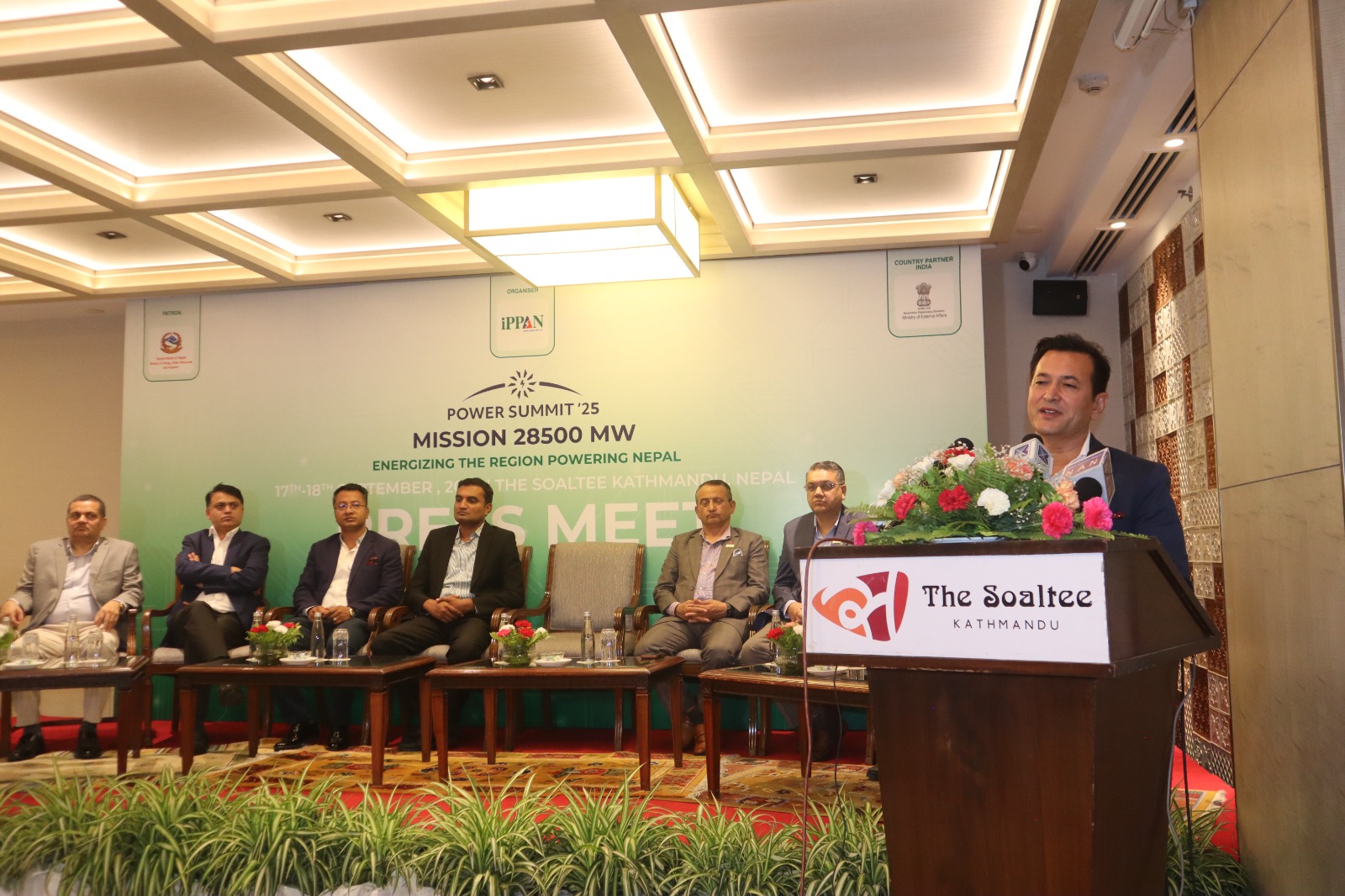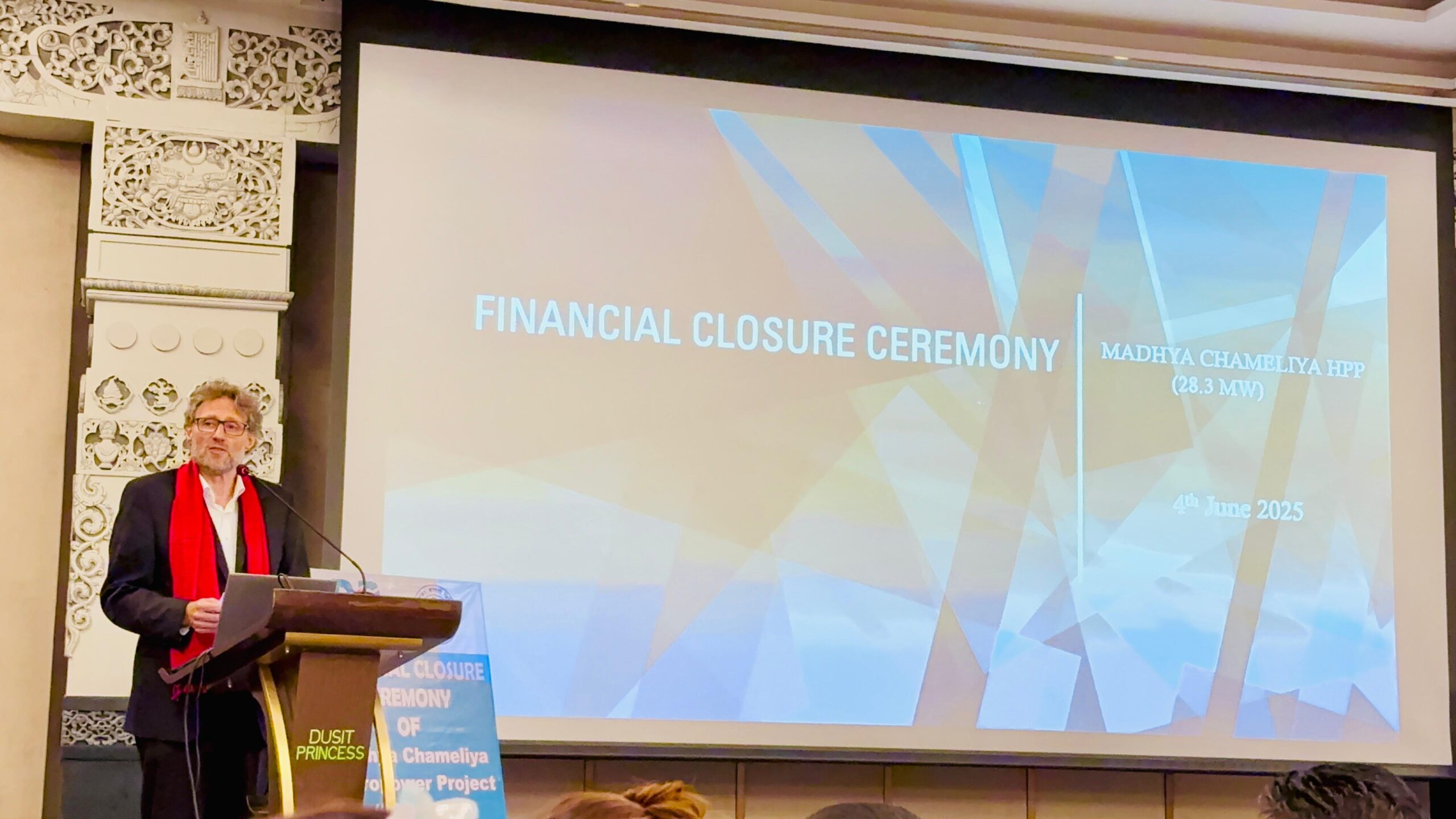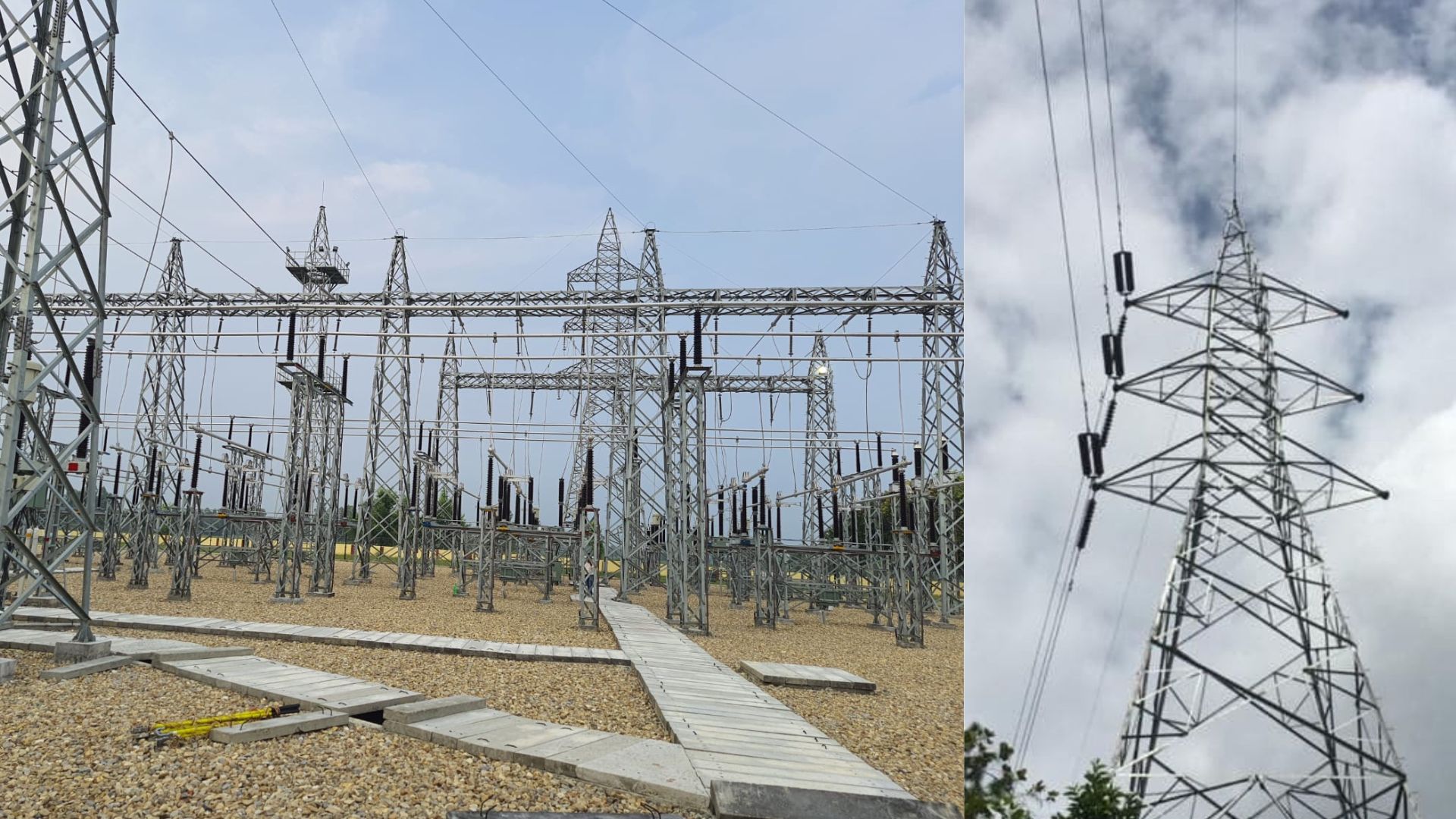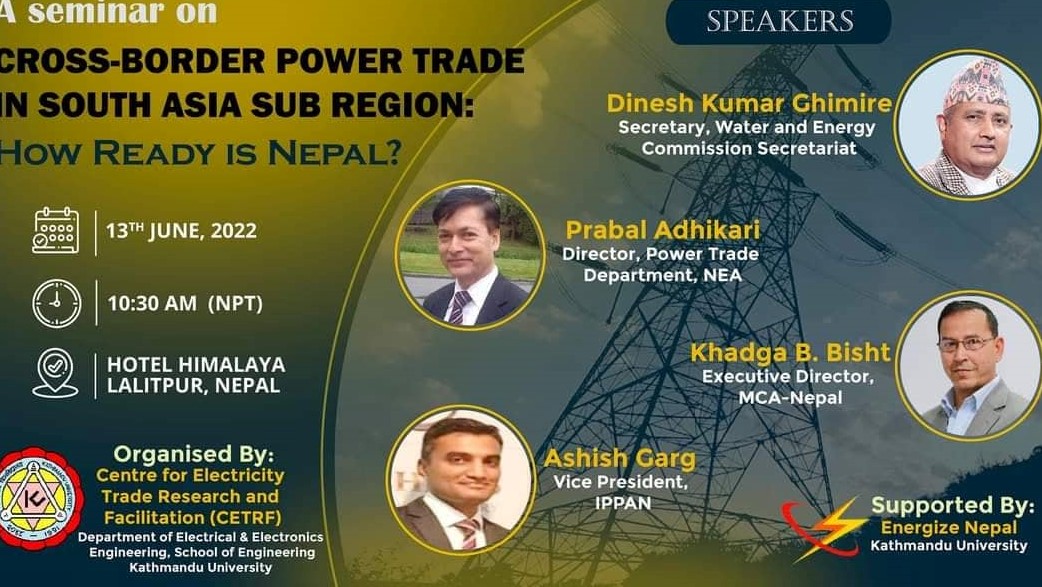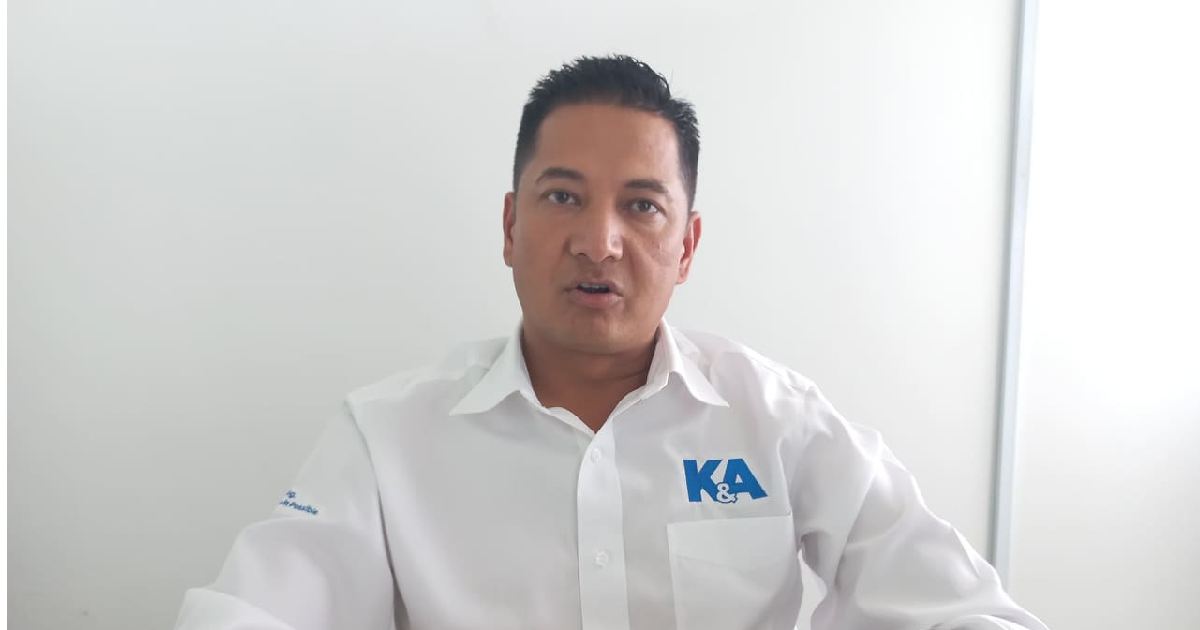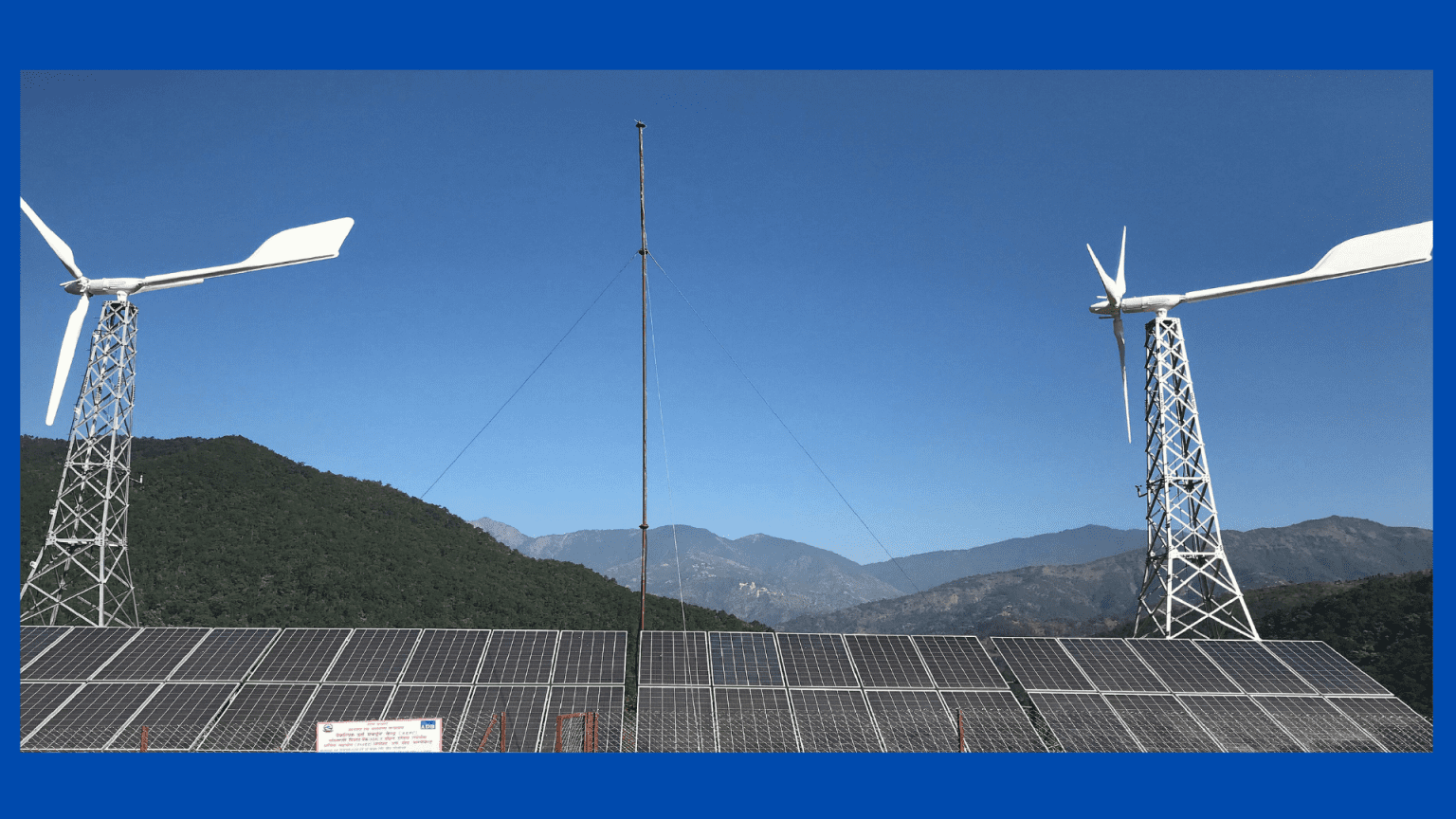
Kathmandu: Experts in the related fields have been saying for a long time that Nepal is a fertile land where electricity can be produced from alternative sources of renewable energy along with hydropower. For the past few years, the government has also been encouraging investment in commercial electricity generation from solar and wind energy sources by prioritizing the concept of mixed energy development in order to make the transmission system durable and of high quality.
First of all, at the time of extreme load shedding in the country, in 2072, the Ministry of Energy, Water Resources and Irrigation issued a policy to allow the commercial production of solar and wind energy by issuing the ‘Concept Paper on National Energy Crisis Prevention and Power Development Decade, 2072’. The ministry issued a concept paper and adopted a policy that 10 percent of the total electricity capacity available in the country’s national transmission grid will be electricity produced from solar and wind energy sources.
With solar and wind energy projects built for the purpose of commercial electricity generation, the Nepal Electricity Authority will enter into a ‘take or pay’ power purchase agreement (PPA) for 25 years at Rs 9.61 per unit and at a price of solar and wind energy at a price higher than the current PPA rate for hydropower. Differently, in the event that there is a financial burden on the Nepal Electricity Authority, the government will adjust the expenditure burden. After seeing that it can be constructed at a lower cost and time than hydropower and that the returns are also good, the private sector came enthusiastically to invest in solar energy production. The private sector got a permit for the solar power project from the Electricity Development Department and started studying it in full swing.
After taking the permit in the beginning, after completing the study and arriving at the process of doing the PPA, the promoter who came to invest in the solar energy project was like hitting stone in first eating. Due to the fact that the cost of solar energy production in the international market is decreasing with the development of technology, solar power projects could not be sold at the rate set by the government. Again for solar power projects Rs 7.30 PPA rate per unit was determined and implemented.
Some investors, who had already taken the permit and proceeded with the study, backed off from investing as they could not be paid at the PPA of previously specified rate Some have built solar power projects at a price of 7.30 rupees PPA. During this period many investors came to commercialize solar energy.
As a result, about 70 megawatts of private investment and solar power projects built by the Electricity Authority at the rate of 7.30 rupees per unit have come into the electricity transmission system. Madhu Vetwal, Joint Secretary and Spokesperson of the Ministry of Energy, Water Resources and Irrigation says that because the government has given priority to solar power in renewable energy apart from hydropower, it is possible to connect electricity to around 70 megawatts built for the purpose of producing commercial electricity today.
“Many solar power projects are in various stages of construction due to the government’s policy of increasing the share of electricity generated from alternative sources to 10 percent in the transmission system,” he says. “Since investment in wind energy has not been attractive, there has been a lot of investment in solar energy.” He says that since the work of the ministry is to formulate policies, it is a matter of investors coming to invest commercially.
According to the Department of Electricity, study permits have been issued for 47 solar power projects of around 1,248 MW so far. 21 solar power projects with a total of 133.56 megawatts have received construction permits. 6 solar power projects of 46 megawatts have applied for study permits, while 3 solar power projects of 15 megawatts have applied for construction permits.
Although the government has adopted a policy of generating electricity from solar and wind energy sources, it seems that there is not much investment attraction in wind energy production. After 2072, the department has issued a study permit only for the 3 MW Mustang Wind project. Although the permit for this wind power project has been issued, the work has not yet progressed.
Investment in solar power is not attractive after fixed base rate of PPA Rs 9.54
As long as the purchase rate of solar power was Rs 7.30 per unit, the private sector was attracted to invest in solar energy. However, in Bhadra last month, the Electricity Regulatory Commission approved the proposal made by the Electricity Authority to revise the maximum base rate of purchase of electricity produced from solar energy sources from Rs 7.30 to Rs 5.94 per unit, but not much investment has been received.
Many solar power projects that have already been studied are unable to go into construction due to the fact that the base rate of PPA was reduced, and new investors have not come to invest in this sector. The low number of applications to the Power Development Department to get a study permit further confirms this.
5.94 rupees to do the PPP of solar power project on competitive basis The promoters complain that it is not economically feasible to invest in solar energy after the maximum base rate has been fixed.
The promoters, who are waiting for their turn, are expressing dissatisfaction that the proposal of the authority to set the competitive rate has come without the opinions and suggestions of experts and without holding a public hearing. They complain that the construction of 23 solar power projects of more than 160 megawatts, which are currently waiting for their turn to be commissioned, is in confusion as no one is coming to invest in solar energy for single digit returns.
Kubermani, executive director of Reedy Hydropower Company, says that apart from hydropower, solar energy is the best source of alternative energy in Nepal, but the state does not understand that the path to investment in this sector is blocked. “Hydropower is the base load for our transmission system,” he says, “The best thing that can be synchronized with hydropower is solar energy. However, the possibility of more investment in solar energy has disappeared after the PPA rate has been revised so that it is not economically feasible.
He insists that the 900 megawatt semi-reservoir project, which is currently in operation, is the best option to meet the afternoon demand through solar energy, but the government has not taken it seriously. Semi-reservoir projects can produce electricity in the entire area only for 3 months of the year. Production of dry season reaches a low point. In order to increase the production hours of the project for the electricity consumed during the evening peak hours of this period, if we combine supply management with solar power in the afternoon and store water in the semi-reservoir project, then the high demand in the evening can be easily managed, he says.
He complained that the development of solar energy has come to a standstill today due to the authorities not being able to understand or the promoters not being able to explain. He also says that the renewable energy share in the transmission system can be increased from 10 percent to 20 percent as solar energy production is becoming easier with the development of technology.
Renewable energy expert Kushal Gurung suggests that the share of sources other than hydropower should be increased to 20 percent instead of 10 percent in the transmission system as the high risk of climate change is increasing in hydropower production as well. “Although there is a wide possibility of renewable energy production, the policy of setting only 10 percent share in the transmission system does not seem to be appropriate,” he says, “it should be increased to 20 percent.” He says that apart from hydropower, renewable energy includes solar, wind and biomass energy, but there is not much investment in other than solar energy. He says that since the government sees renewable energy as the same as hydropower, investment in these sectors has not been encouraged. He says that when the investment in solar energy is being encouraged, after reducing the PPA rate, the investment in this sector is in crisis.
He insists that no matter what happened in the past, a policy should be introduced to promote wind and biomass energy along with solar energy. “In addition to hydroelectricity, investment in solar, wind and biomass energy should also be encouraged, but that has not been done,” he says. He argues that if we promote biomass energy and encourage biomass energy, then the imported coal consumed by the industry can be replaced. He also says that there is a need for a separate agency to purchase biogas from large plants that are produced by investing in the private sector.
The support of alternative renewable energy to remote areas off the grid
Even though the Nepal Electricity Authority’s data shows that 96 percent of households in the country have access to electricity from the national transmission system, citizens living in remote rural settlements in Karnali and Far Western provinces still have to depend on traditional sources of energy.
The government has taken a policy to provide access to electricity from the grid in areas where the national transmission system has reached and from alternative energy sources in remote areas within the next 2 years. To meet the government target, The Alternative Energy Promotion Center (AIPC) under the Ministry of Energy, Water Resources and Irrigation has been working to improve the living standards of the citizens by providing access to electricity from alternative energy sources other than hydropower in geographically remote rural areas.
In rural areas where it is not possible due to geographical complexity and high cost of transmission system, the goal is to increase the access to clean and sustainable energy through renewable energy technology and to provide a long-term solution by producing renewable energy and electrifying it through the facility of grants and soft loans. AEPC is working in accordance with the long-term goal of providing clean, sustainable, reliable and accessible renewable energy to all people by the year 2030.
Joint Secretary of the Ministry Bhetuwal says that since the goal is to provide access to electricity to all Nepalese in the next one and a half to two years, the electricity authority will electrify the areas where the grid can be reached and the AEPC will electrify from renewable energy sources such as solar and small hydropower in the areas where the transmission system needs more cost.
According to him, there is lack of budget to fulfill this goal. “For complete electrification of remote villages, an additional budget of 66 billion rupees is required,” he says, “However, the required budget for this program has not been received. If we get the necessary budget, the target can be met. It cannot be said when there is a lack of budget.
The ministry has been conducting various subsidy programs through AEPC to provide access to solar energy sources in remote rural areas where the national transmission and distribution system has not reached. AEPC has a provision to subsidize up to 90 percent of the total cost of solar mini-grid projects with a capacity of up to 250 KW in remote areas owned by the local level.
Similarly, up to 60 percent subsidy has been given to mini-grid projects of 100 KW capacity. In public institutions, there is a provision to give 65 percent subsidy of the total cost to solar power projects costing not more than 5 lakh rupees.
Similarly, there is provision for subsidy for solar power projects in geographically difficult rural areas. AEPC subsidizes about 40 percent of the total cost of such projects. For an additional 30 percent, there is a soft loan arrangement. The remaining 30 percent of the investment will have to be raised from the private sector or the community or households that receive electricity services.
Green hydrogen production is possible, not preparation
As the connected capacity of hydropower production increases, the debate that Nepal can be made a hub for green hydrogen production is being discussed not only within the country but also globally. Many countries of the world are also showing their desire to invest in green hydrogen production in Nepal if they get permission.
The government has also started showing interest in producing fertilizer and ammonia by producing green hydrogen and using green hydrogen as fuel as it will contribute to the expansion of the domestic electricity market. In particular, to increase the electricity consumption in monsoon and to establish a large chemical fertilizer industry within the country, suggestions are coming from the relevant stakeholders to go for the production of green hydrogen.
Similarly, it has opened the door to the possibility of switching to green hydrogen fuel instead of imported petroleum fuel. On the other hand, in order to reduce the impact of climate change, we have the opportunity to go for the alternative of green hydrogen fuel. As the electricity used to produce green hydrogen fuel is produced from renewable energy sources, it is also environmentally friendly and hydrogen can also be used as clean energy for transportation and cooking fuel, so it is considered effective in reducing carbon emissions. A study conducted by Kathmandu University (KU) has also shown that it is economically feasible to produce green hydrogen in Nepal.
According to KU, if the commercial production of green hydrogen fuel can be started within the country, there is a possibility that 50 percent of the imported diesel can be replaced in the next 15 years. KU’s study has shown that if only half of the imported diesel can be replaced with green hydrogen, 70 billion rupees will be saved from importing petroleum.
Virajsingh Thapa, assistant professor of KU and head of the green hydrogen lab, says that after long debates and discussions, there is a positive atmosphere about the possibility of producing green hydrogen in Nepal. He said that while KU was speaking alone yesterday, the current financial year’s budget, election manifestos of political parties, and seminar and conferences organized by the private sector are being discussed today, and the environment for investment is becoming a climate for investment.
After a long debate and discussion, the awareness of what is green hydrogen and why it is necessary for Nepal has developed from the political level, civil service level to the general public. Norms and value has increased,” he says, “for now, this is a great achievement. The policy is being made. Since the ground is being built, it is believed that in the next 2 years, a leap can be made in the stage of green hydrogen production.
He says that even after the current Prime Minister Pushpa Kamal Dahal announced in a public event that he would ride a vehicle running on green hydrogen fuel, interest of many people have increased. He says that the discussion about green hydrogen started late in Nepal compared to developed countries, but it has not yet been lagging behind.
Even though the government is now trying to formulate a policy regarding green hydrogen, the stakeholders say that there is a need to continue to hesitate to reach the stage of implementation. The government itself is not serious about the development of green hydrogen. As there is an old tendency to listen until gossip and then forget again if you stop gossiping, the government should be made serious about gossiping.
Only when investors come forward to invest, the government will act immediately,” he says Thapa says that since KU’s initiative has reached the present situation, now is the time for investors and businessmen who are willing to invest in green hydrogen to take interest. According to him, green hydrogen is going to be discussed at the ‘Power Summit 2023’ which is going to be held by the Independent Energy Producers Association of Nepal (IPAN) in the capital from Tuesday. He says that the government should make a short-term and long-term plan and work on how to produce green hydrogen commercially.
There is no policy to produce and trade of green hydrogen
The developed countries of the world are working towards the goal of reducing carbon emissions to zero by 2050, but there is no policy to produce and trade green hydrogen in Nepal. According to the recommendations made by the committee formed to study the possibility of green hydrogen production, joint secretary Bhetuwal says that he is going to formulate a policy after discussing with experts.
“The committee has studied and made a blueprint regarding what the green hydrogen policy should be,” he says. “Now, after discussing it with experts, we will create a policy by looking at the policies and practices of other countries. “He says that for the time being, the production and trade of green hydrogen in Nepal will be expensive due to the cost, so there is little possibility of producing it immediately.
At the current level of studies, this is right in relation to time. Where we have the possibility of green hydrogen production and the ministry is ready to move forward with the necessary policy and legal arrangements for that, he says. He says that in the future, when the technology of green hydrogen production will be cheap and the production cost will be reduced, the commercial production of green hydrogen will be economically feasible.
He says that as this is being extensively studied, there is a possibility of making it cheaper with technology, so the ministry plans to prepare a policy and stay in a state of readiness. Although the commercial production of green hydrogen is expensive in the current situation, it can be made economically feasible by increasing the price of imported petroleum products and coal, which increase carbon emissions, says Assistant Professor Thapa. He says that instead of comparing cheap and expensive costs, Nepal should necessarily go for the option of green hydrogen production to reduce the risk of climate change. He argues that the cost of green hydrogen production can also be said to be cheaper when the Nepal Electricity Authority has reduced the tariff rate of electricity that is wasted at night.


